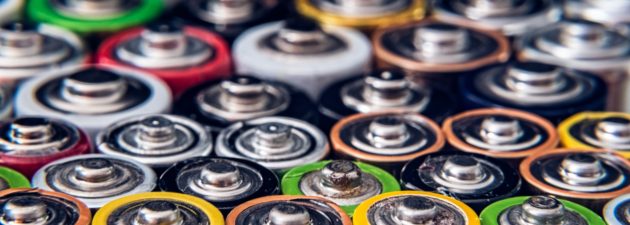Lithium is key to batteries. Batteries are key to electrification. Electrification is key to the energy transition. This is why lithium is at the heart of many debates. Of all the minerals that are essential to the transition, lithium is undoubtedly the one that has caused the most ink to flow. It fuels a certain number of fears, particularly of possible supply disruptions, but also a few fantasies. What is the real situation?
Is lithium essential to the energy transition?
As mentioned above and as their name implies, lithium-ion batteries are made from lithium and, since they are used in electric vehicles (EVs), their demand has increased dramatically. Lithium is now essential for both types of batteries used in EVs and, although there is a lot of research into new types of batteries, no new models can be produced on a large scale in the next ten years. In the medium term, therefore, the electrification of transport cannot do without lithium.
Is lithium scarce?
In 2020, lithium was added to the European Union’s list of „critical“ raw materials (a list that is updated every three years and currently includes 30 elements). The term „critical“ can be confusing. It does not necessarily mean that the resource is scarce or that a shortage is imminent. Minerals are often on this list because their production is too concentrated and/or the producing countries are unstable or have a poor track record of fair trade.
But lithium is not rare. It is one of the most abundant elements in the earth’s crust. It is found in almost every region of the world, including the bottom of the ocean.
So why is lithium critical?
We need to look at the supply structure to understand this. Firstly, a small number of countries dominate its production1. Second, 57% of its refining is done in China. The risks are therefore at least as great on the upstream part of the value chain as on the downstream part.
Why is the lack of lithium regularly mentioned?
Driven by the alarmist statements of many managers in the automotive industry, discussions about an „inevitable“ lithium shortage are recurrent. According to Elon Musk, „lithium batteries are the new oil“ or that refining lithium is „a license to print money“ (July 2022). The explosion in lithium prices over the past two years also reinforces the view held by some that the mining industry is unable to cope with the exponential growth in demand (which could increase 20-fold between 2021 and 20302).
Short-term shortage possible, long-term shortage unlikely
In the long term, we believe that fears about market balance are exaggerated. Remember that lithium was in a bear market less than two years ago. The post-covid recovery has been accompanied by a strong increase in demand for EVs, which supply is taking time to adapt to, leading to a surge in lithium prices (more than tenfold since the end of 2020).
To cope with the EV craze (which indicates a change in consumption patterns, an essential step in the transition to a Net Zero Emission economy), there are no fewer than 300 projects to build battery gigafactories worldwide.
It should be noted, however, that the ‚time scale‘ of mining companies differs from that of car or battery manufacturers. While a gigafactory can be built in 2-4 years for the most efficient players, it takes almost 10 years for a greenfield lithium project to go into production.
The current tensions on the market are therefore mainly due to the gap between the sudden acceleration in demand and the response time of supply.
The mining companies have perfectly identified this window of opportunity and have been multiplying for months the announcements of capacity increases and new projects (whose ROI will be colossal in the current price conditions). It should be noted that these projects will most often benefit from unwavering state support due to their strategic nature.
High prices, government support and demand visibility provide a favourable framework for mining companies and we see no reason to doubt the mining industry’s ability to meet the surge in lithium demand over the long term.
1 Production 2021 en volume : Australie 52% – Chili 25% – Chine 13% – Argentine 6% – Reste du monde 4% (Source : US Geological Survey)
2 Source : IEA – World Energy Outlook 2022

